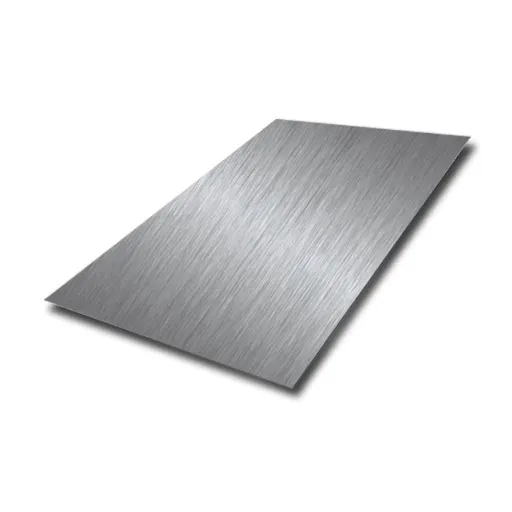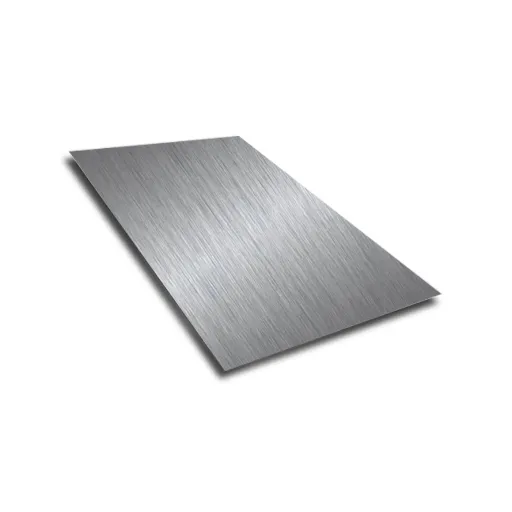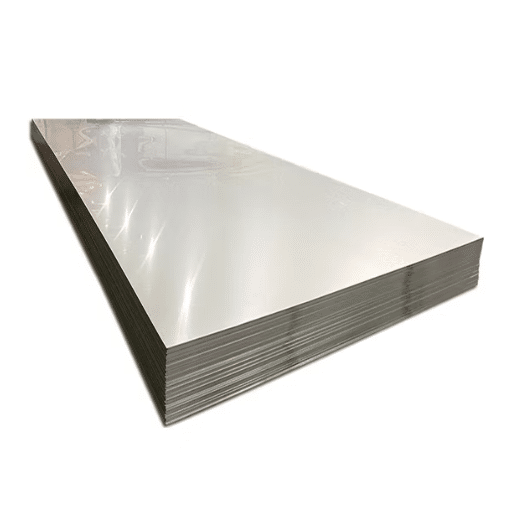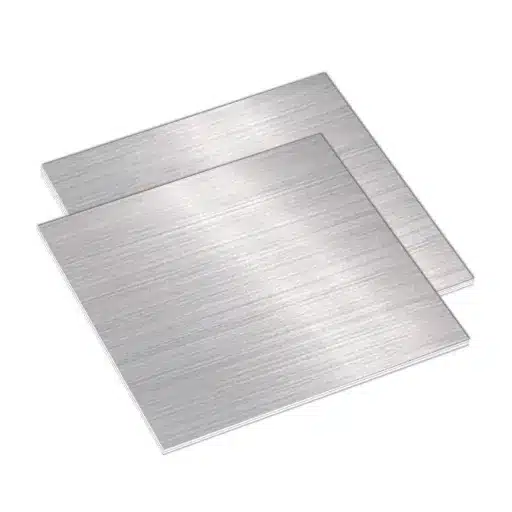The metal, which is well known for its usage and a range of applications, zinc has always left people wondering about its magnetic properties. In this case, we intensively try to answer the question: Is zinc a magnetic or nonmagnetic metal and try to differentiate more about its performance under magnetic fields. The objective is to determine why zinc can be classified as a magnetic material. Hence, we invite you to accompany us in our attempts to comprehend the more complex aspects of zinc’s magnetism and its core fundamental properties. Let’s start with the interesting phenomena of zinc’s magnetism and how science influences its magnetic properties.
What Are the Magnetic Properties of Zinc?

Despite the arguments, there have been scientific studies regarding the magnetic characteristics of zinc focused on explaining how zinc behaves in a magnetic field. The level of magnetization in zinc is usually very low. Therefore zinc is described as non magnetic, since no observable forces of attraction or repulsion act on it in the presence of a magnetic field. This is because all of its electrons are paired, and therefore, atomic magnetic moments are canceled. Therefore, zinc belongs to the class of materials known as diamagnetic materials. It is also worth mentioning that even though zinc per se is non magnetic, it can often affect magnetic fields, and in such metals and alloys may exhibit weak paramagnetic traits. The studies are also further research and experimentation that are being done to find out the complexity of the magnetic behavior of zinc and how this can be used in a variety of applications.
Is Zinc a Magnetic Metal?
By no means is Zinc deemed a magnetic metal; the electronic structure of zinc leads to all its electrons being paired which causes moments on these magnets to cancel one another out on an atomic scale: because of this, Zinc displays diamagnetic properties where in other words, it does not show any significant attraction as well as repulsion for magnetic fields. Zinc, on the other hand, is said to have weak paramagnetic behavior in some alloys and some compounds but is mostly not magnetic as it does not react towards magnetic fields.
Understanding the Core Magnetic Features of Zinc
Zinc has some unique magnetism worth looking into even though it is technically non-magnetic. It is seen that due to its electron’s electronic configuration, all the electrons are paired up, causing the annihilation of magnetic moments on the atoms, so zinc is diamagnetic. There is a word of caution as zinc is also a weak paramagnetic metal when present in some compounds or alloys and so it becomes responsive to weak magnetic fields. The specific magnetic properties of zinc depend on its compound or alloy, what part of the crystalline structure is involved, and any contaminants present. This is a still developing area of research and experimentation as scientists want to learn more about the magnetism of zinc and its applications.
In what way is Zinc a Diamagnetic Substance?
Zinc is seen as diamagnetic as the arrangement of its electrons will lead to the net cancelling of the magnetic moments at the atomic level. For example, all electrons in zinc are spin paired, thus making it possible for a material with weak repulsion to exist in a magnetic field. The explanation of this effect lies with quantum mechanics as regards the filling of orbitals in the structure of its electronic component. About zinc, the diamagnetic characteristics of the metal have been realized as its atomic electrons assume lower energy levels that are devoid of unpaired spins that could couple with external magnetic forces. However, zinc does display weak paramagnetic characteristics when it is part of certain compounds and alloys, but in general, it is predominantly a diamagnetic material. The alloy or the particular compound, the crystalline form, and sometimes the impurities may alter the magnetic response of the zinc in these cases. The role of zinc in various applications, particularly its most astounding aspect – magnetic characteristics, continues to be researched in detail.
How Does Zinc Behave in a Magnetic Field?
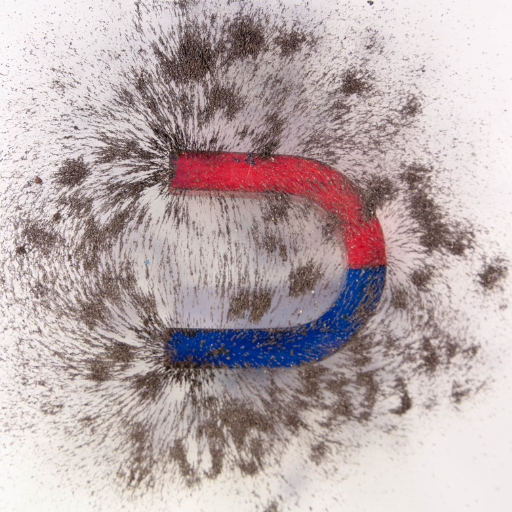
Zinc can be categorized as having diamagnetic properties because it is often stated that the magnetic moments cancel out due to the presence of atoms. This is because zinc is the element where all of its electrons participate in pairing, which means there is a very weak forcing away from a magnetic field. Much of the scientific literature explains that the cause behind the diamagnetic nature of zinc is due to the filled electron orbits, where there are no unpaired electrons to allow action with external magnetic fields. Some zinc-inclusive compounds or alloys could show minor paramagnetic characteristics, but the general magnetic property of zinc will still be qualified mainly as diamagnetic. If anything, this may explain why certain specific compounds or alloys, crystal structure and the presence of some impurities have been able to modify the magnetism of zinc in these instances. Further studies will still add up to the body of knowledge of zinc and its relevance in many applications in terms of its magnetism.
Why is Zinc Not Attracted Towards The Magnetic Field?
Zinc does not seem to be attractive to a magnetic field due to the combined effects of its internal magnetic moments, which leads to the loss of magnetism on the atomic scale. This behavior can be explained by the fact that all electrons are paired in zinc, resulting in weak repulsion from the magnetic field. The cause of this phenomenon in zinc is its completely filled electron orbitals which do not have a single unpaired electron to interact with the external magnetic field. Although some zinc compounds or alloys, such as brass, may exhibit weak paramagnetic effects due to slight magnetism, zinc, in general, has the dominant character of a diamagnet. But there are certain variables such as a specific compound or alloy, crystalline structure and its impurities would affect the magnetic behavior of zinc in such cases. A better comprehension of the ferromagnetic properties of the substance and its usage in different scenarios will be seen through continuous attempts.
Is There a Possibility Of Zinc Having Magnetic Properties?
Zinc does not appear to be a magnetic material. Through extensive scientific research and expertise, it has been concluded that zinc is mostly a diamagnetic material, meaning it will be pushed away from magnetic fields as a result of magnetic moments cancelling each other out on an atomic basis. This effect is caused by all electrons in the orbitals of zinc being completely paired and together having a weak repulsion in response to a magnetic field. Although some zinc-containing compounds or alloys may have slightly more than ordinary magnetic properties, in general, zinc’s magnetic behavior is mostly dominated by its diamagnetic behavior. In terms of specific compounds, alloys, crystalline structures, and certain impurities, there are cases where these can affect the magnetic response of zinc in some way.
Understanding the Interaction of Zinc and its Alloys with Other Metals
The probability of zinc being a magnetic material is rather low. Zinc is dominantly considered to be diamagnetic owing its all its electrons to have paired occupancy in their respective orbitals and thus only showing very weak repulsion in the presence of a magnetic field, so such claims have been thoroughly investigated and shown to be in accordance with scientific principles. Although zinc, however, has certain alloys or compounds which are considered to be paramagnetic, the general magnetic susceptibility of zinc is still understood to be diamagnetic in nature. In some cases, certain compounds, alloys, crystalline structures, and impurities may alter the magnetic response of zinc.
What Type of Magnetism Does Zinc Exhibit?
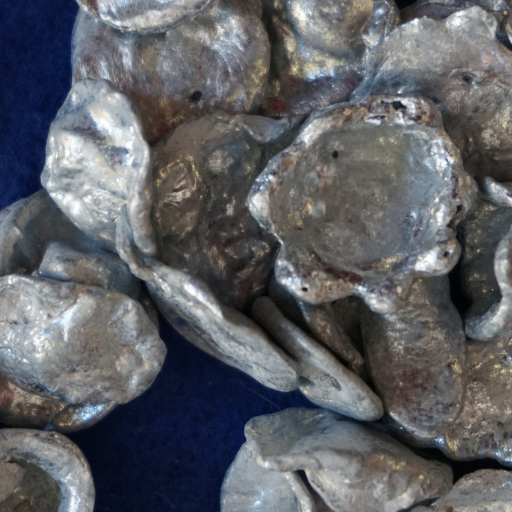
Zinc atoms are extensively classified as diamagnetic materials since their respective atomic orbitals contain all electrons. As such, the substance is weakly repelled from any magnetic field. Nonetheless, there may be some dissenting attribution of alloying zinc, several formations, or impurity, but overall, research points to zinc’s diamagnetic behavior.
How Do Unpaired Electrons Affect Zinc’s Magnetism?
Most of zinc’s magnetic behavior is classified together with its diamagnetic aspects because the electrons in the orbitals are completely occupied. Therefore, most welding traces are thin in the presence of a magnetic field. Nevertheless, other research suggests the existence of several alloying or changes in crystal formation that allow for some magnetic alteration of zinc.
In other elements, unpaired electrons have always been the center of focus in determining their magnetic properties. Unfortunately, in zinc, all electrons are paired; thus, the element manifests a diamagnetic behavior since most of the electrons that should be in the upper orbitals are filled.
Specific compounds, metallic alloys, crystalline structures and even impurities in the structure have been said to affect the way zinc and its alloys behave magnetically. in some cases these parameters allow for slight fluctuations in its magnetic response.
Technical Parameters:
- Magnetic Behavior: main characteristic – diamagnetic
- Electron Configuration: complete orbital electrons pairing
- Influence Factors: particular compounds, alloys, crystalline structures, and impurities
One of the important aspects in materials science that allows us to understand materials and how they behave in magnetic fields, is understanding the magnetic properties of zinc. Further research and exploration will continue to deepen our understanding of the fascinating world of magnetism in different elements and compounds.
On the contrast of magnetism of Zinc with that of Ferromagnetic materials
Due to high energy electrons being completely paired in Zinc’s electron orbitals, it is mainly diamagnetic. In this aspect, zinc is quite different from ferromagnetic materials. The reason ferromagnetic materials are ferromagnetic is because they have unpaired electrons which induce a net magnetic moment then these moments, when in the presence of a magnetic field all align parallel to one another and thus produce great attraction to the field, whereas zinc does the opposite under such circumstances due to its complete pairing of electrons it repels the field. The magnetic behavior of zinc can be affected by its specific compounds, alloys, crystalline structures, or the combination with impurities, making its magnetic response weaker in some cases. Understanding these distinctions contributes to our understanding of material properties and magnetic fields. Further research will continue to uncover the mysteries related to magnetism in various elements and compounds.
The Influence of Zinc Atomic Structure on Its Magnetic Properties
The atomic structure of zinc defines an external aspect of its magnetic properties. The total pairing of electrons in the outer shell orbitals of a zinc atom makes it diamagnetic, where the magnetic field weakly repels the substance. In contrast, such materials as iron, cobalt, and nickel are divided into ferromagnetic substances that consist of unpaired electrons that are closely aligned parallel to each other. In the case of zinc, its atomic structure leads to electron pairing and, hence, little or no tendency to be isolated by magnetic fields. It should be stressed, though, that the magnetic properties of zinc may be altered by other influences, such as some of its compounds, alloys, individual crystals, or some impurities; the development of magnetism in a certain case may vary. Many things still need to be studied to understand better the correlation between magnetism and structural aspects of elements and compounds.
Why is Zinc Classified as a Non-Magnetic Material?

Zinc belongs in a group of materials and substances which are considered non-magnetic due to electron arrangement as well as their structure at the atomic level. Within the electron orbitals of zinc, electrons occupy all sites in each orbital, which results in a diamagnetic behavior of zine and meaning that the presence of a magnetic field weakly repels it. This is not the case with ferromagnetic materials whereby some electrons are not paired and are antiferromagnetically aligned. The pairing of zinc’s electrons accounts for its lack of strong attraction for magnets. It is worth mentioning, however, that the magnetic aspects of zinc may differ due to the presence of compounds, alloys, crystalline structures or impurities, which in some cases modifies its behavior in regards to magnetism. Current investigations are deepening our grasp of the complicated interaction of magnetism within the atomic construct of metals and non-metals.
Understanding the Electronic Configuration of Zinc
To understand why zinc is categorized as a non-magnetic substance, one must carefully consider its structure and electronic configuration. As indicated in the periodic table, zinc has or comes with the electronic configuration [Ar] 3d10 4s2, which reveals that it has a completely filled 3d orbital and filled 4s orbital. This stable electron configuration makes zinc exhibit diamagnetic characteristics, which weakly repel all magnetic fields. As there are no unpaired electrons, there will be no strong attraction to magnetic fields, hence zinc is referred to as a non-magnetic substance. It is worth mentioning that, there are also certain compounds or alloys of zinc, crystal structures, and impurities that cause changes in its magnetic properties. These may change its magnetic properties under certain conditions of temperature for instance. It is worth mentioning ongoing research may help in understanding the complex interaction between magnetism and atomic structure of elements and compounds.
What Are the Unique Properties of Zinc That Are Different To Non-Magnetic Metals?
According to the findings above and observational studies, Zinc belongs to an opposite set of materials known as Non Magnetic Metals. Even though Zinc may be alloyed with other Non-Magnetic Metals, some descriptors for Zinc help in placing it further apart from this set of materials:
- Electronic Configuration and Atomic Structure: The electron configuration of zinc, which is [ Ar] 3d10 4s2 and 3d and 4s orbitals are fully occupied, implies that it should not be drawn towards a magnetic field, as it should not contain any unfilled orbitals. Thereby making the electron configuration of zinc unique compared to all other non-metallic magnetic substances.
- Arrangement of Electron and Its Interaction with Magnetic Fields: Because one does not find to any unpaired electrons in Zinc’s electron configuration, it would always be difficult to extract Zinc from its compounds as it is strongly bonded and possesses minimal properties of a magnet. This makes it less magnetic than other non-metal magnets that have some magnet properties.
- Interrelationships of Compounds, Alloys and Impurities: Various particular compounds, alloys, crystalline structures and particulates can affect the magnetic nature of zinc. These inclusion elements are capable of causing some sort of changes in its magnetic properties and are more likely to exhibit different characteristics when placed under certain conditions. Further experiments factoring these components have to be performed to allow a better comparison to other nonmagnetic metals.
It has to be emphasized that the study of zinc in relation to other non-magnetic metals is a constantly evolving emphasis of research and study. Other more detailed technical parameters like Curie temperatures, magnetic susceptibilities, crystal structures are likely to help comprehend what makes zinc and the other non-magnetic metals different. The further study of the correlation between the magnetism of elements and compounds and their atomic structure will broaden the scope of knowledge about these substances.
Can Some Additives Cause Zinc To Be Magnetic
Indeed, combinations of alloys with zinc allow its magnetic characteristics to change. Specifically, zinc demonstrates slightly magnetic behavior if amalgamated with metals such as aluminum, copper, or titanium. Of course, the level of magnetism in zinc alloys is computed to the type of the alloy, its crystallite, and even the impurities present. In addition to those factors, this phase is characterized by Curie temperature, magnetic susceptibility, and also crystal structures which may provide further characteristics of zinc alloys in terms of magnetism. More studies and investigations in this area would also help gain deeper insights on the nature of magnetism and its interplay with the atomic structure of elements and compounds.
Can Zinc Be Magnetized Like Iron?
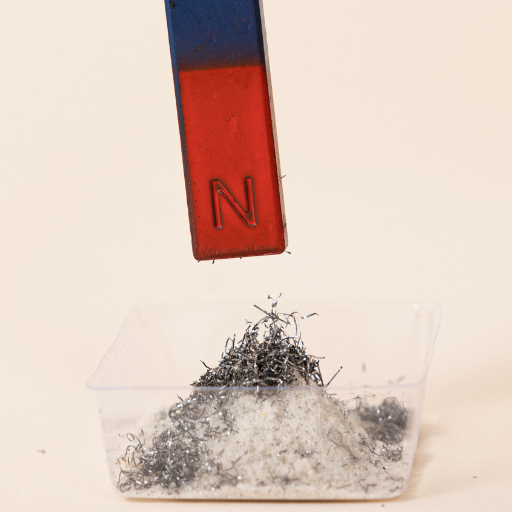
Due to its atomic structure and electron configuration, zinc cannot be magnetized like iron. Unlike iron, zinc lacks unpaired electrons in its outermost shell, which are essential for aligning magnetic moments and exhibiting magnetism. Consequently, zinc does not possess the necessary magnetic properties to spontaneously generate a magnetic field. This is supported by various sources in reputable scientific literature.
Why Zn Is Not Capable Of Exhibit Magnetism Deemed As Iron
As we have seen with the physical outlook of zinc, it has a distinguishable atomic structure as well as electron configuration all of which cannot allow for it to exhibit magnetism in the same way iron does. On one side of the coin lies iron, which does have electrons in its outermost shell and remains unpaired, while on the other side of the coin lies zinc, which lacks this possibility. Hence, zinc does not have the required physical properties to generate a magnetic field naturally.
Apart from this phenomenon being absent, which can be seen through zinc with the naked eye, technical parameters such as the Curie temperature and magnetic susceptibility are also a good way to examine. A rough estimate of what temperature the two separate entities need to be at to lose magnetism can be defined as a Curie temperature, and in this case, it is significantly less for iron than zinc. So, too, is the case with magnetic susceptibility, which states that iron is much better suited than zinc in terms of responding to external magnetic fields.
In addition, it could be added to this point that the non-magnetic characteristic of zinc can also be attributed to its structure, in particular, its hexagonal close-packed (HCP) crystal structure. This crystal structure, combined with a lack of unpaired electrons, also leads to a lack of orientation of magnetic moments required for magnetism to occur.
To recapitulate, due to its structure, specifically its atomic structure, configuration of electrons and absence of unpaired electrons, zinc cannot demonstrate magnetic characteristics like iron. These other parameters, together with technical ones, such as Curie temperature and magnetic susceptibility, motivate why the magnetic properties of zinc are quite different from iron’s.
Discovering the Magnetic Moment in Zinc
Zinc has a diamagnetic characteristic, which does not give it any attraction because of its atomic structure, electron configuration, and, most importantly, the absence of unpaired electrons. Conversely, zinc has a lower Curie temperature, which is the temperature at which iron loses its magnetism. This is attributed to its staggered crystal structure, as zinc has a hexagonal close-packed (HCP) structure. The hydrogenated four to five carbon can take over the index was undertaken and there to amend as well magnetism required for the electron aligning spins the lack of unpaired electrons can. In addition, the volumetric magnetic susceptibility of zinc is also much less than that of iron, indicating that this metal does not react very much to magnetic fields. To sum it all, the technical parameters of Curie temperature and magnetic susceptibility again bring out the most basic explanation for why zinc and iron are so different from each other in regard to magnetic characteristics and presence of magnetism in Zinc.
Potential for Producing Magnetic Zinc Alloys
Zinc is traditionally considered diamagnetic and not a magnetic material due to its atomic structure and electronic configuration. The crystal geometry and electron arrangement have also contributed to the low number of unpaired electrons in zinc, meaning that the temperatures where unpaired electrons would be abundantly present, zinc would be poorly suited as a magnetic material. Furthermore, zinc has a significantly lower Curie temperature than iron. The difference in the Curie temperature may be due to the variation in the crystal structure between zinc and iron. With that being said, while zinc is not a magnetic material its alloys can exhibit magnetism when such features are introduced. Nevertheless, to fine-tune the particular magnetic characteristics needed, much more studies and tests would be necessary.
Applications and Experiments Involving Zinc’s Magnetic Properties

The magnetic properties of zinc have come to the attention of many different applications and experiments. Scientists have sought to produce zinc alloys with magnetic properties by adding other magnetic elements. Such alloys may be used to manufacture components for electronics, telecommunications, and magnetic storage devices. The experiments with the zinc magnetism aim at the improvement of the composition and shapes of the alloys in order to get required magnetic characteristics. However, research and experiments are still in progress to fully develop the magnetic potential of zinc and its alloys for new applications in magnetic materials.
How Zinc’s Diamagnetism is Used in Scientific Researc
The diamagnetism of zinc has already been useful in a number of the scientific research. With the use of zinc, scientists are able to conduct research and experiments where they are able to create a weak magnet by using an external magnetic field. This trait allows them to alter and observe the effects of magnetism in an environment that has been artificially created. They are also able to expose zinc samples to sundry magnetic fields in strength and direction enabling them to grasp basic magnetism concepts and the interaction of magnets. This research supports the ongoing efforts of creating new magnetic materials, explaining the magnetism of various materials, and pioneering restarts of the developments of physics, material science and nanotechnology. While some specific technical requirements may differ according to the research being done, employing the zinc’s diamagnetism helps give scientists more possibility to search and know more about magnetism-related aspects.
Practical Applications of Zinc in Magnetic Environments
- Magnetic Field Shielding: Zinc’s diamagnetism would be useful in producing shields against magnetic fields, which can be applied in MRI rooms to limit magnetic field interference.
- Magnetic Sensors and Detectors: Because of its unique magnetic properties, zinc can be applied in sensors and detectors. These devices utilize the alteration in magnetism of zinc to sense or detect the presence of a magnetic field on devices like compasses, navigational systems, and magnetic imaging systems.
- Magnetic Levitation With a strong diamagnetism, zinc is able to throw away all forms of magnetic field and therefore finds its application in the case of magnetic levitation. This property is very useful in such systems in which motion is achieved without friction as in maglev trains by means of repulsion of magnets and zinc coated tracks.
- Electromagnetic Interference (EMI) Shielding: The same property that iodine possesses when used as a shield against magnetic fields are found on a zinc metal. It is used in components such as electronic appliances to minimize the effect of interference from outside magnetic and electromagnetic fields during the operation of the system.
- Magnetic Storage Devices: Zinc is an essential component in certain devices, including magnetic storage devices such as hard disk drives (HDDs). It functions as a coating that protects the HDDs’ magnetic recording heads from the magnetism of other objects.
- Magnetic Resonance Imaging (MRI): Zinc is used in MRI as one of the components within the contrast agents. These agents assist in differentiating tissues by enhancing their visibility, thus broadening the scope of MRI’s diagnostic potential.
The focus on MRI shows the practical uses of zinc in magnetically charged environments in engaging more industries, ranging from technology and means of transport to the health sector and material science. Having a grasp of the magnetic properties of zinc, many researchers and engineers have not ceased to find various uses for zinc in the manufacture of different magnetic devices.
Experimenting with Zinc: Simple Ways to Test its Magnetic Behavior
Zinc is an essential element that possesses interesting magnetic features that can be used to date in several scenarios. For those interested in testing the magnetic properties of zinc, here are some experiments you can conduct:
- Testing Attraction: Magnet: Approach the sample with a magnet to determine if zinc can be attracted to the pole. Since there is no noticeable evidence of magnetism in zinc, it could be borrowed towards the magnet if Cinc is If zinc is magnetic. Other testing, however, may not show satisfactory captivation.
- Fabrication of a Galvanic Cell: Combine a piece of zinc metal with another metal like copper or aluminum in a saltwater solution. The zinc will serve as the anode in the cell, enabling the production of electric current and highlighting its electrochemical properties.
- Evaluation of magnetic susceptibility: Employ a magnetometer to determine the magnetic susceptibility of zinc. This parameter shows how much a material can be magnetized when subjected to an external magnetic field. Generally, the magnetic susceptibility of zinc is low, but certain values can be measured in the laboratory.
These clinical experiments offer a perspective on the magnetic properties of zinc during the use of a magnetic storage device, MRI, and more. Be careful that even if zinc has magnetic properties, they are certainly not as strong as those of other magnetic materials.
Reference sources
Frequently Asked Questions (FAQs)
Q: Is zinc magnetic or non-magnetic?
A: Zinc is not magnetic. It is classified as a diamagnetic material, meaning it is weakly repelled by a magnetic field and does not retain magnetic properties when the external magnetic field is removed.
Q: Can zinc become magnetic under certain conditions?
A: Even though zinc is a diamagnetic material, it does not become magnetic under normal conditions. It remains weakly repelled by a magnetic field and does not show permanent magnetic properties.
Q: How does zinc behave in a magnetic field?
A: Zinc is weakly repelled by a magnetic field due to its diamagnetic nature. This means that when placed in a strong magnetic field, zinc will experience a very slight repulsion.
Q: What is the difference between zinc and ferromagnetic materials like iron, cobalt, and nickel?
A: Unlike ferromagnetic materials such as iron, cobalt, and nickel, which have strong magnetic properties and are attracted to a magnetic field, zinc is diamagnetic and is weakly repelled by a magnetic field. Ferromagnetic materials can retain magnetism, while zinc cannot.
Q: Why is zinc not considered a paramagnetic material?
A: Zinc is not a paramagnetic material because it does not have unpaired electrons in its atomic structure that would be attracted to a magnetic field. Instead, zinc’s electrons are paired, resulting in its diamagnetic properties.
Q: What happens when zinc is combined with other metals, like copper?
A: When zinc is combined with copper, it forms alloys such as brass. While copper itself isn’t magnetic and zinc is diamagnetic, the resulting alloy may have different properties, but it generally does not become magnetic.
Q: Can zinc cause magnetic interference or affect magnetic fields?
A: Zinc does not cause magnetic interference or significantly affect magnetic fields because it is a diamagnetic material. Its interaction with magnetic fields is minimal, leading to only weak repulsion.
Q: What role does zinc oxide play in magnetic properties?
A: Zinc oxide is also a diamagnetic material, similar to pure zinc. It does not exhibit magnetic properties and is not attracted to a magnetic field. Its primary use is in applications unrelated to magnetism, such as in sunscreens and as a catalyst.
Q: How does the atomic structure of zinc contribute to its magnetic properties?
A: The atomic structure of zinc, which includes paired electrons, contributes to its diamagnetic properties. This pairing prevents zinc from being attracted to a magnetic field, differentiating it from metals that have unpaired electrons and exhibit ferromagnetism.

